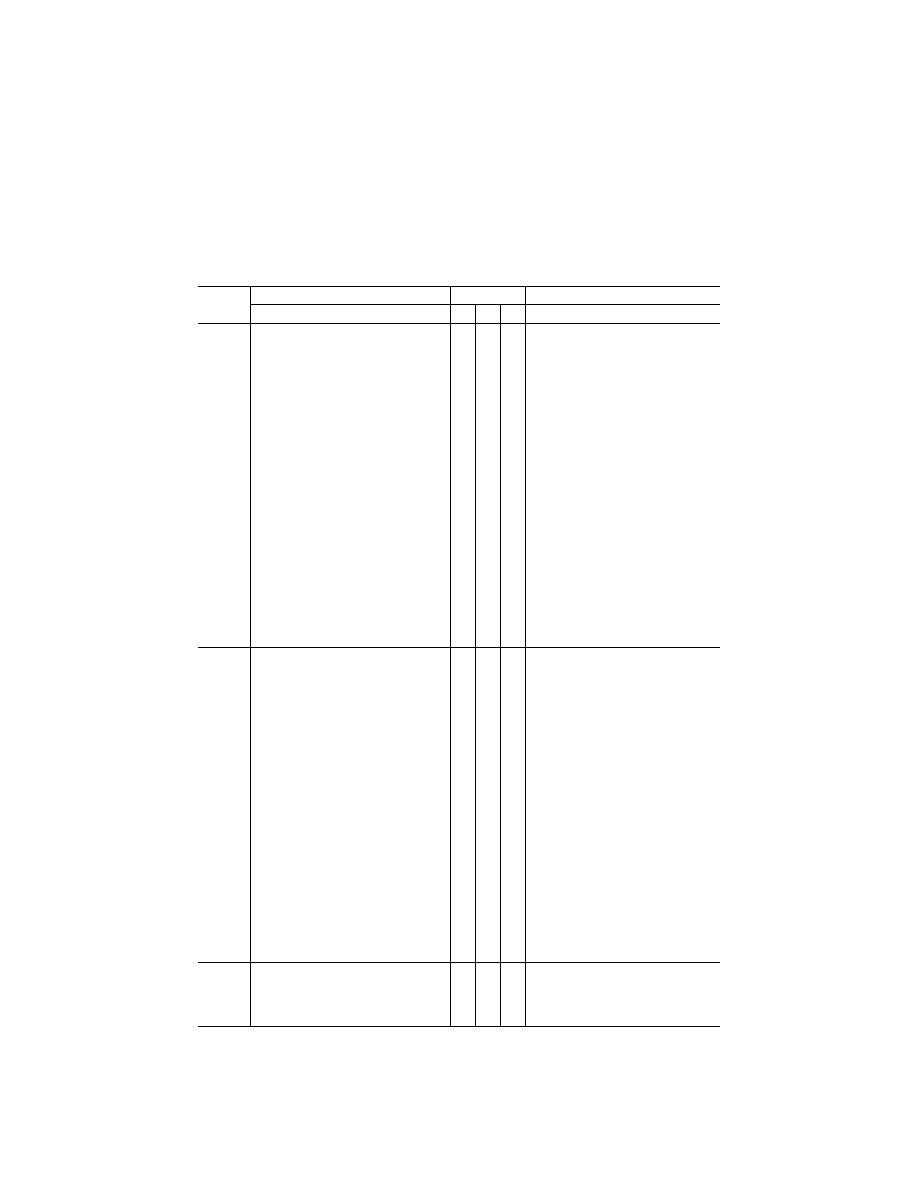
331
Federal Aviation Administration, DOT
Pt. 60, App. C
T
ABLE
C1A—M
INIMUM
S
IMULATOR
R
EQUIREMENTS
—Continued
Entry No.
QPS requirements
Simulator levels
Information
General simulator requirements
B
C
D
Notes
6.c. ...........
The simulator must provide a continuous vis-
ual field-of-view of at least 146
°
horizontally
and 36
°
vertically per pilot seat. Both pilot
seat visual systems must be operable simul-
taneously. Horizontal field-of-view is cen-
tered on the zero degree azimuth line rel-
ative to the aircraft fuselage. The minimum
horizontal field-of-view coverage must be
plus and minus one-half (
1
⁄
2
) of the minimum
continuous field-of-view requirement, cen-
tered on the zero degree azimuth line rel-
ative to the aircraft fuselage.
An SOC must explain the geometry of the in-
stallation. Capability for a field-of-view in ex-
cess of the minimum is not required for
qualification at Level C. However, where
specific tasks require extended fields of view
beyond the 146
°
by 36
°
(e.g., to accommo-
date the use of ‘‘chin windows’’ where the
accommodation is either integral with or
separate from the primary visual system dis-
play), then the extended fields of view must
be provided. When considering the installa-
tion and use of augmented fields of view,
the sponsor must meet with the NSPM to
determine the training, testing, checking,
and experience tasks for which the aug-
mented field-of-view capability may be re-
quired.
An SOC is required.
X
Optimization of the vertical field-of-view may
be considered with respect to the specific
helicopter flight deck cut-off angle. The
sponsor may request the NSPM to evaluate
the FFS for specific authorization(s) for the
following:
(1) Specific areas within the database needing
higher resolution to support landings, take-
offs and ground cushion exercises and train-
ing away from a heliport, including elevated
heliport, helidecks and confined areas.
(2) For cross-country flights, sufficient scene
details to allow for ground to map navigation
over a sector length equal to 30 minutes at
an average cruise speed.
(3) For offshore airborne radar approaches
(ARA), harmonized visual/radar representa-
tions of installations.
6.d. ...........
The simulator must provide a continuous vis-
ual field-of-view of at least 176
°
horizontally
and 56
°
vertically per pilot seat. Both pilot
seat visual systems must be operable simul-
taneously. Horizontal field-of-view is cen-
tered on the zero degree azimuth line rel-
ative to the aircraft fuselage. The minimum
horizontal field-of-view coverage must be
plus and minus one-half (
1
⁄
2
) of the minimum
continuous field-of-view requirement, cen-
tered on the zero degree azimuth line rel-
ative to the aircraft fuselage. An SOC must
explain the geometry of the installation. Ca-
pability for a field-of-view in excess of the
minimum is not required for qualification at
Level D. However, where specific tasks re-
quire extended fields of view beyond the
176
°
by 56
°
(e.g., to accommodate the use
of ‘‘chin windows’’ where the accommoda-
tion is either integral with or separate from
the primary visual system display), then the
extended fields of view must be provided.
When considering the installation and use of
augmented fields of view, the sponsor must
meet with the NSPM to determine the train-
ing, testing, checking, and experience tasks
for which the augmented field-of-view capa-
bility may be required.
An SOC is required.
X
Optimization of the vertical field-of-view may
be considered with respect to the specific
helicopter flight deck cut-off angle.The spon-
sor may request the NSPM to evaluate the
FFS for specific authorization(s) for the fol-
lowing:
(1) Specific areas within the database needing
higher resolution to support landings, take-
offs and ground cushion exercises and train-
ing away from a heliport, including elevated
heliport, helidecks and confined areas.
(2) For cross-country flights, sufficient scene
details to allow for ground to map navigation
over a sector length equal to 30 minutes at
an average cruise speed.
(3) For offshore airborne radar approaches
(ARA), harmonized visual/radar representa-
tions of installations.
6.e. ...........
The visual system must be free from optical
discontinuities and artifacts that create non-
realistic cues.
X
X
X
Nonrealistic cues might include image ‘‘swim-
ming’’ and image ‘‘roll-off,’’ that may lead a
pilot to make incorrect assessments of
speed, acceleration and/or situational
awareness.
VerDate Sep<11>2014
16:30 Jun 25, 2019
Jkt 247047
PO 00000
Frm 00341
Fmt 8010
Sfmt 8002
Q:\14\14V2.TXT
PC31
kpayne on VMOFRWIN702 with $$_JOB